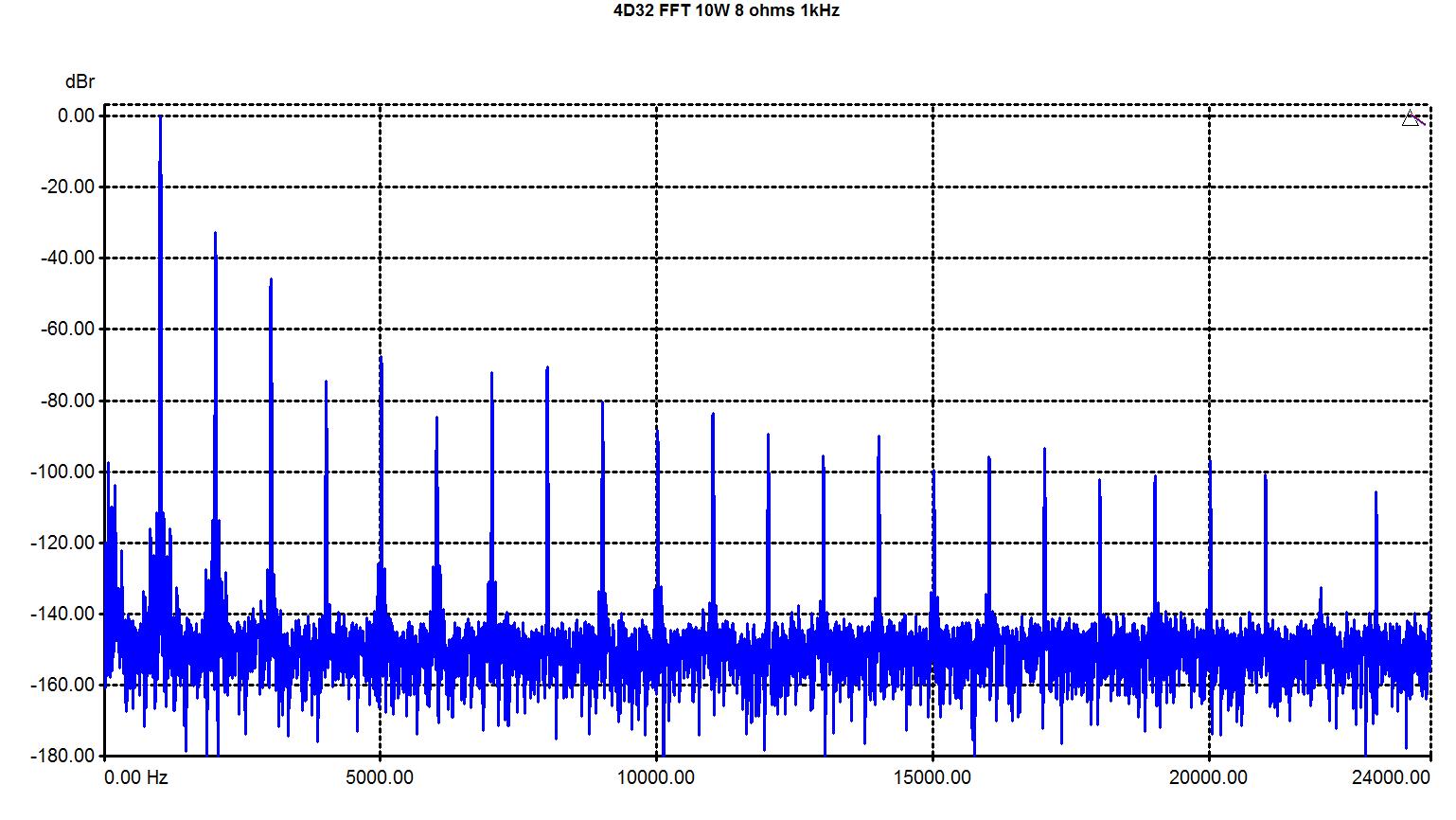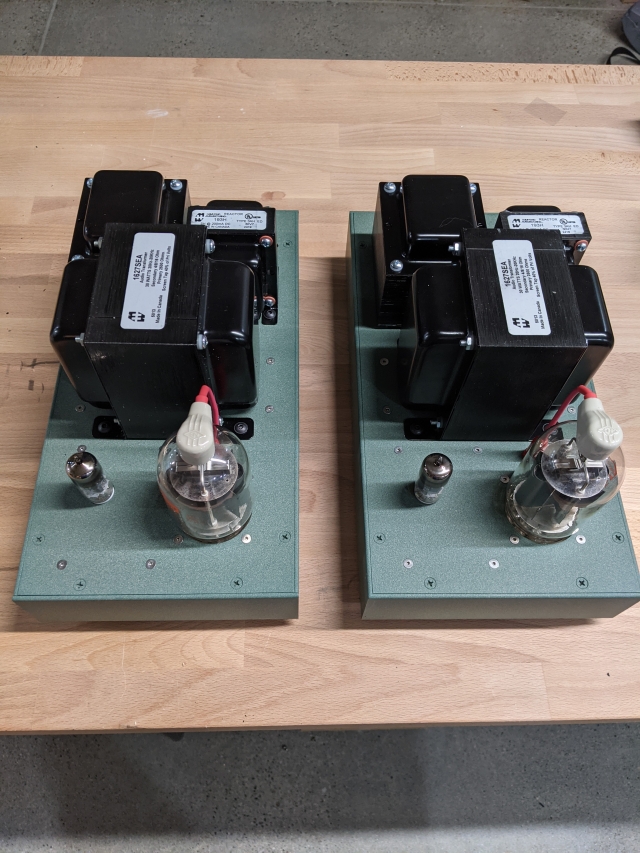
4D32 Single-ended ultralinear amp
The 4D32 is somewhat of an unloved tube in audio. It was designed for RF use - Collins radio used it in transmitters. McIntosh did make an amp using it, though it is a rare bird.
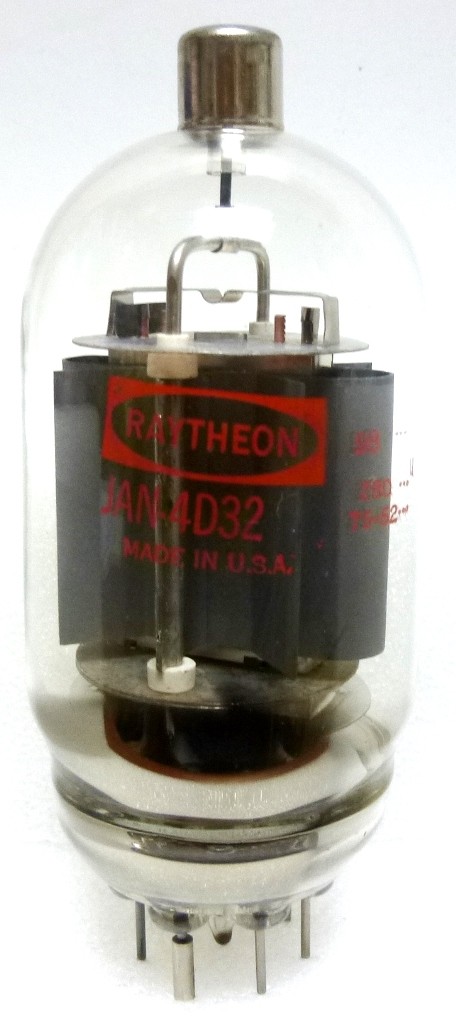
It is a beam tube, like a 6L6, with a 50 watt plate dissipation. Ratings say 350V maximum on G2. You can find the datasheet here: https://frank.pocnet.net/sheets/201/4/4D32.pdf
Typical operating characteristics in the datasheet are shown for AB1 (112 watts out of a pair) and AB2 (125 watts), using a plate voltage of 600V and a screen of 350V (or 250V for AB2). No single ended ratings.
I did some curve traces in triode and UL mode:
It doesn't look bad, though it isn't as linear as some tubes.
I experimented with SE triode and ultralinear modes, as well as a hybrid using a P-channel MOSFET in the cathode. For whatever reason ultralinear worked the best. I implemented a little bit of loop NFB to get the gain where I wanted it and the output impedance down a bit.
I wound up running at a B+ supply voltage of 370V. This gave me a plate voltage of 360V, biased at 116mA. That's pretty conservative - the plate dissipation is 38V, and the screen 4W. At this operating point, using a Hammond 1627SEA OPT and ultralinear connection, gets 16 watts at 5% THD. And 0.57% THD at 1 watt (all into 8 ohms). The voltage gain is 7.8x, 17.8dB, and the Zout (on the 8 ohm tap) is 2.24 ohms.
The driver is a single triode connected 12HG7/12GN7 tube, with a CCS on the plate set to 33mA.
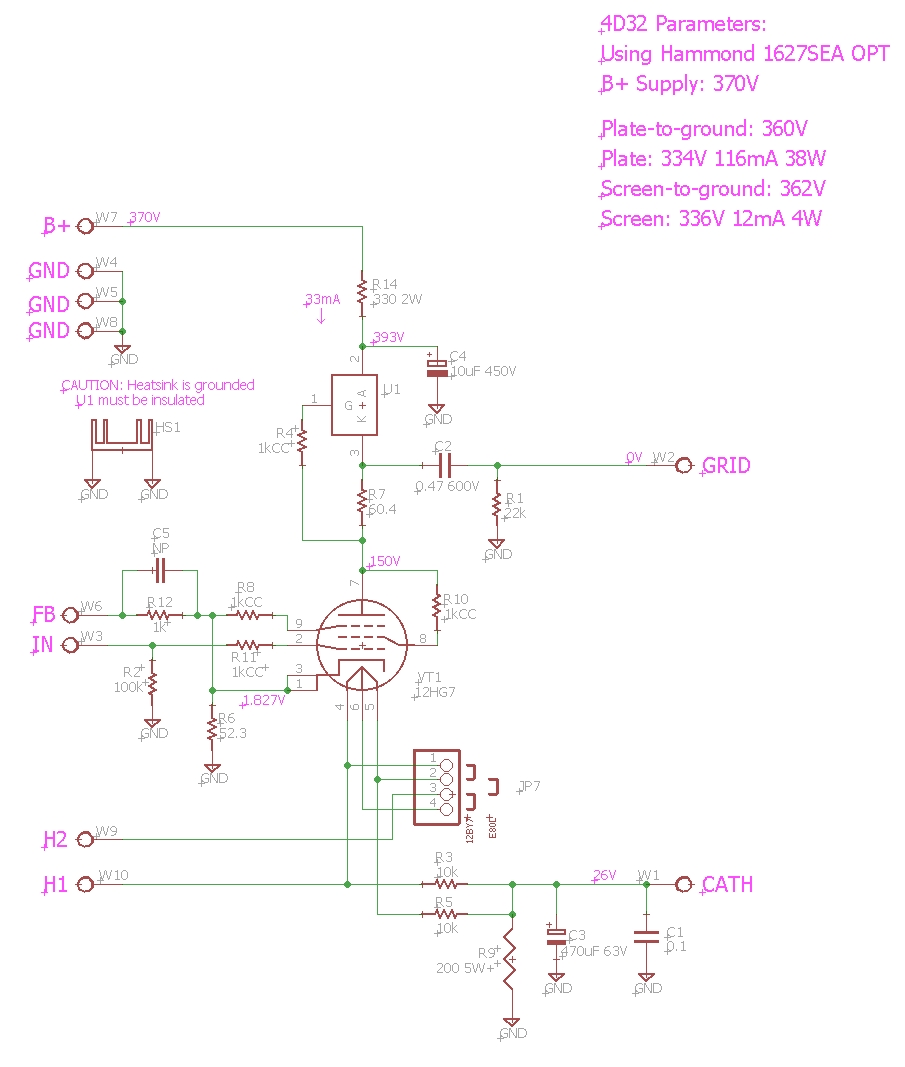
Download the schematic as a PDF
I built the driver on a PCB:
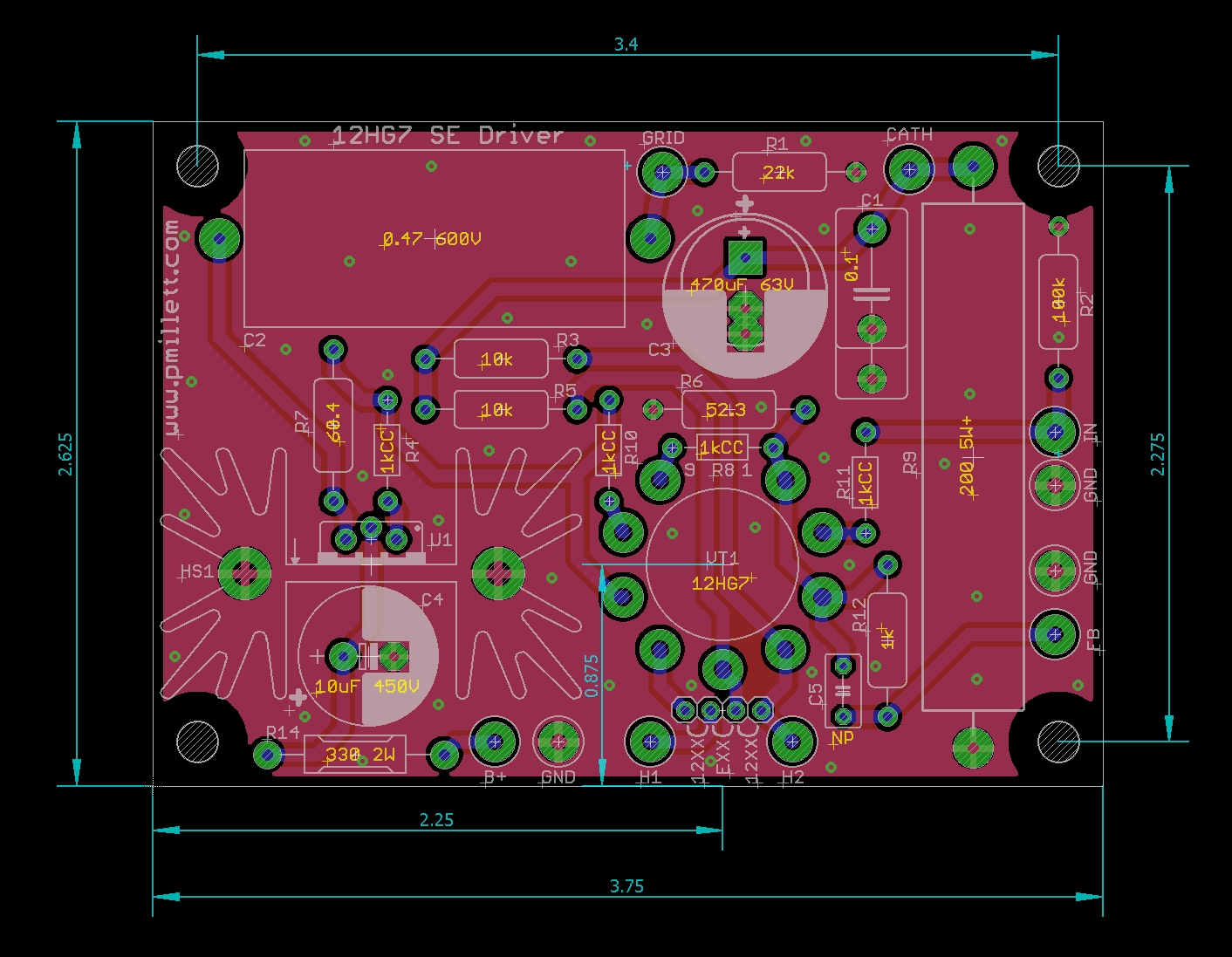
This driver could be used for any number of other power tubes. It's open loop gain with a 12HG7 or 12GN7 tube is 41x. With 1V RMS in, out is 41V with a THD of 0.14%. It runs fine from 300 to 400V B+ and draws 35mA, though at 300V it clips with 2V in with the component values shown above (you could likely tweak the operating point if needed).
Here is an FFT at 350V B+, with 1V RMS in / 40V RMS out:
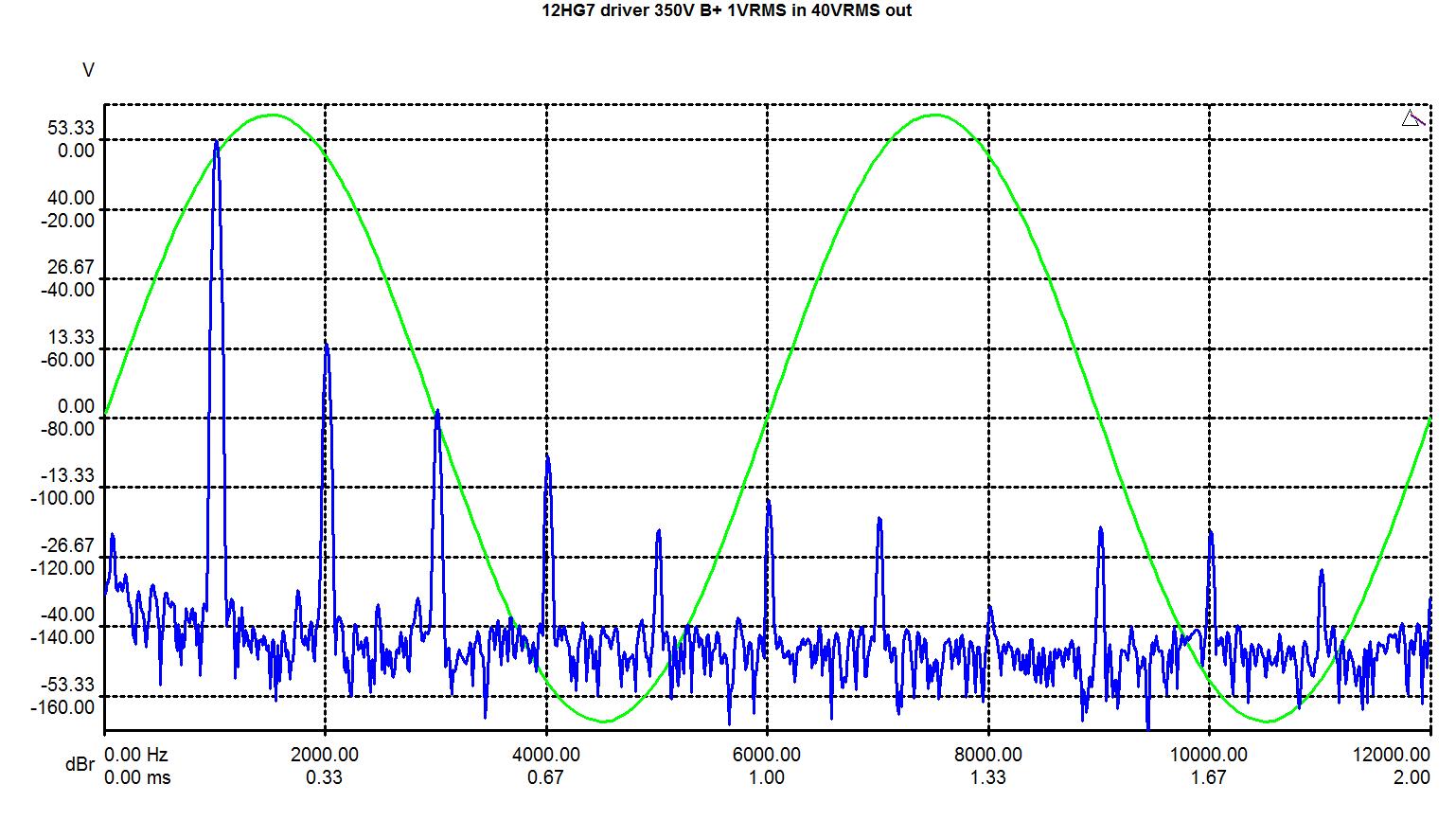
You could also use other tubes. 12BY7, 12DQ7, 12HL7 and 11HM7 share the same pinout. There is a jumper that allows use of a E80L tube, or other 6.3V heater tubes that have a similar pinout. Of course, you will need to optimize the bias and plate load for other tubes.
Here are some looks inside:
Here you can see the driver PCB at the left, the Septar socket at the right. A 1k grid stopper for G1 connects it to the PCB; a grid stopper for G2 (the 180 ohm 2W one) is mounted to the tube socket and a terminal, where the UL tap (blue/yellow) from the OPT is connected. The plate cap is connected to a banana jack, where the plate lead (blue) of the OPT is connected.
This shows the power supply PCB. I used one of the general purpose PCBs that I designed a wile back. It is set up as full-wave center tapped. A 5H choke (Hammond 193H) is mounted on top of the chassis. Wires carry the B+ to the OPT (red wire) and to the driver PCB. Note that the OPT wires are hidden underneath the power supply PCB.
The power transformer here is a Hammond 290MAX, which is a guitar amp replacement transformer. 580VCT @ 250mA and 6.6V at 6A (plus an unused 6.6V winding). You can also see the OPT secondary windings (4 and 8 ohm taps plus common) wired to the output binding posts. A blue wire connects the common back to the ground on the power supply PCB. The AC input is on a PCB that I designed for a low voltage supply - the AC input part seperates from the rest of the board. It has an inrush limiter, a couple of MOVs, and a voltage select switch (the transformer has dual 120V primaries),
Chassis
This is all built on a chassis made by Landfall Systems. I opted for powder coating this time - I think it came out pretty cool...
Measurements
Freq response at 1W. A little bump at 10Hz.
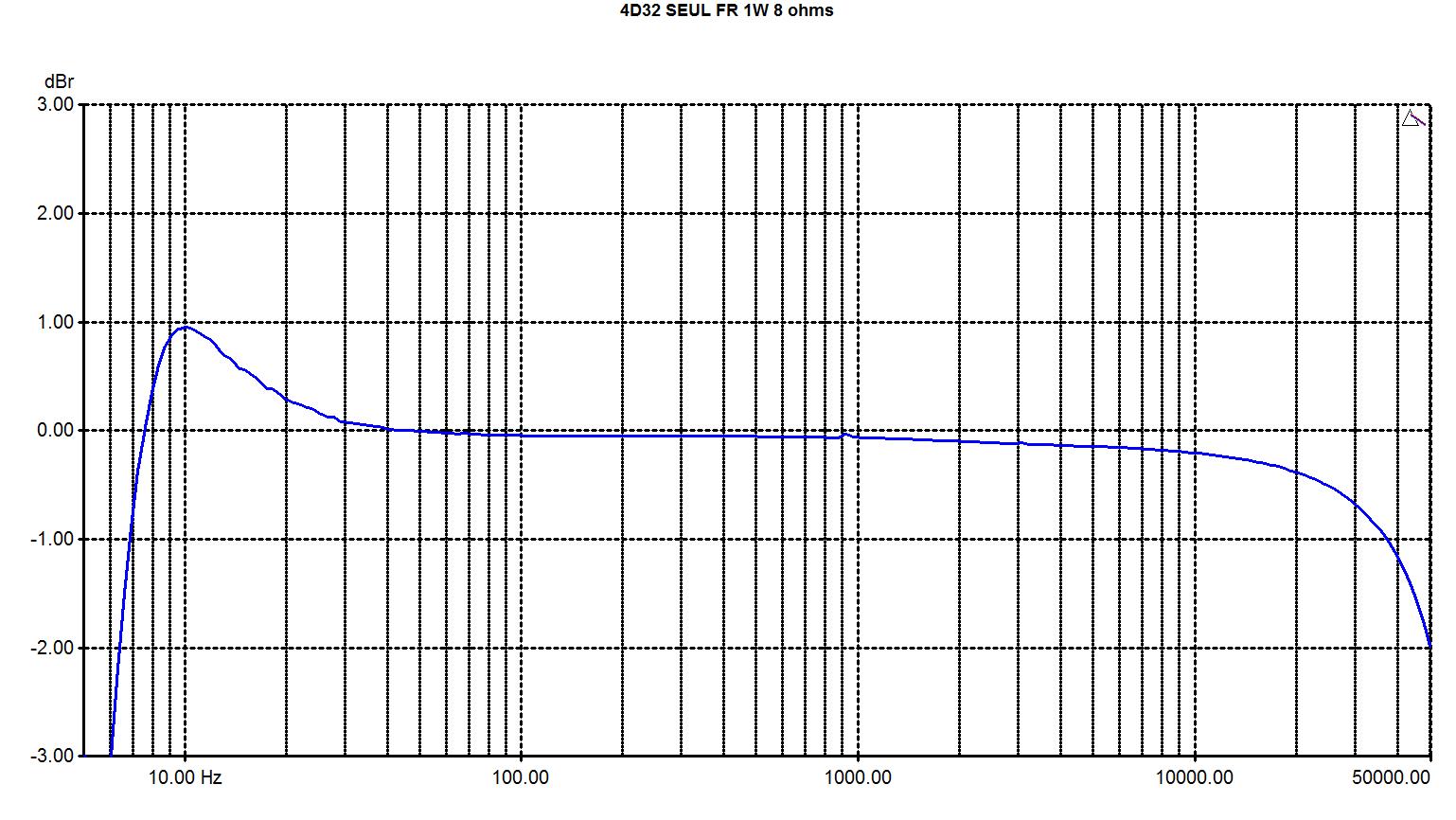
Freq response at 10W looks pretty textbook, -3dB at 9Hz and 50kHz.
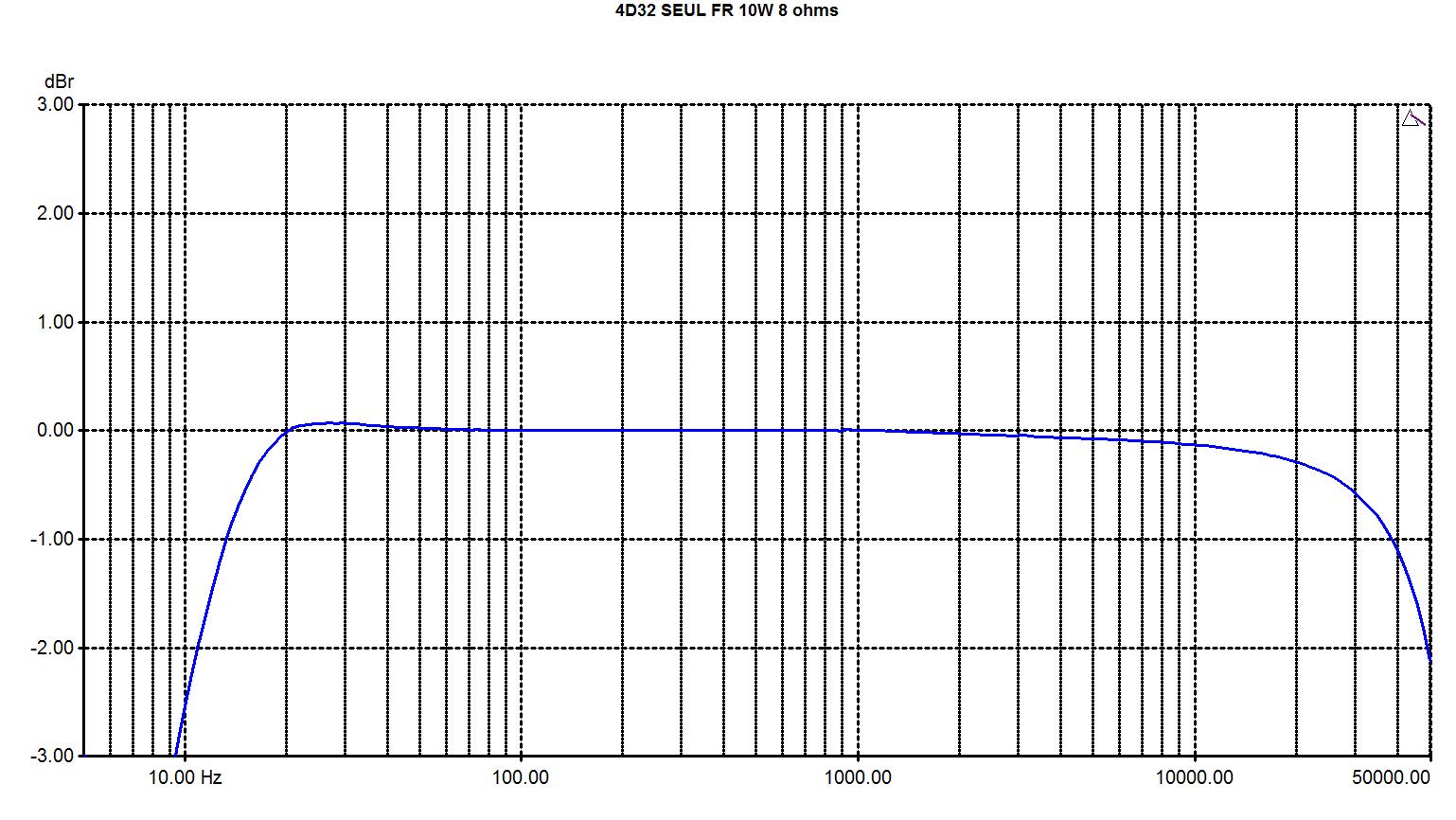
Not really low distortion, maybe like a SE triode amp... THD+N vs. output power:
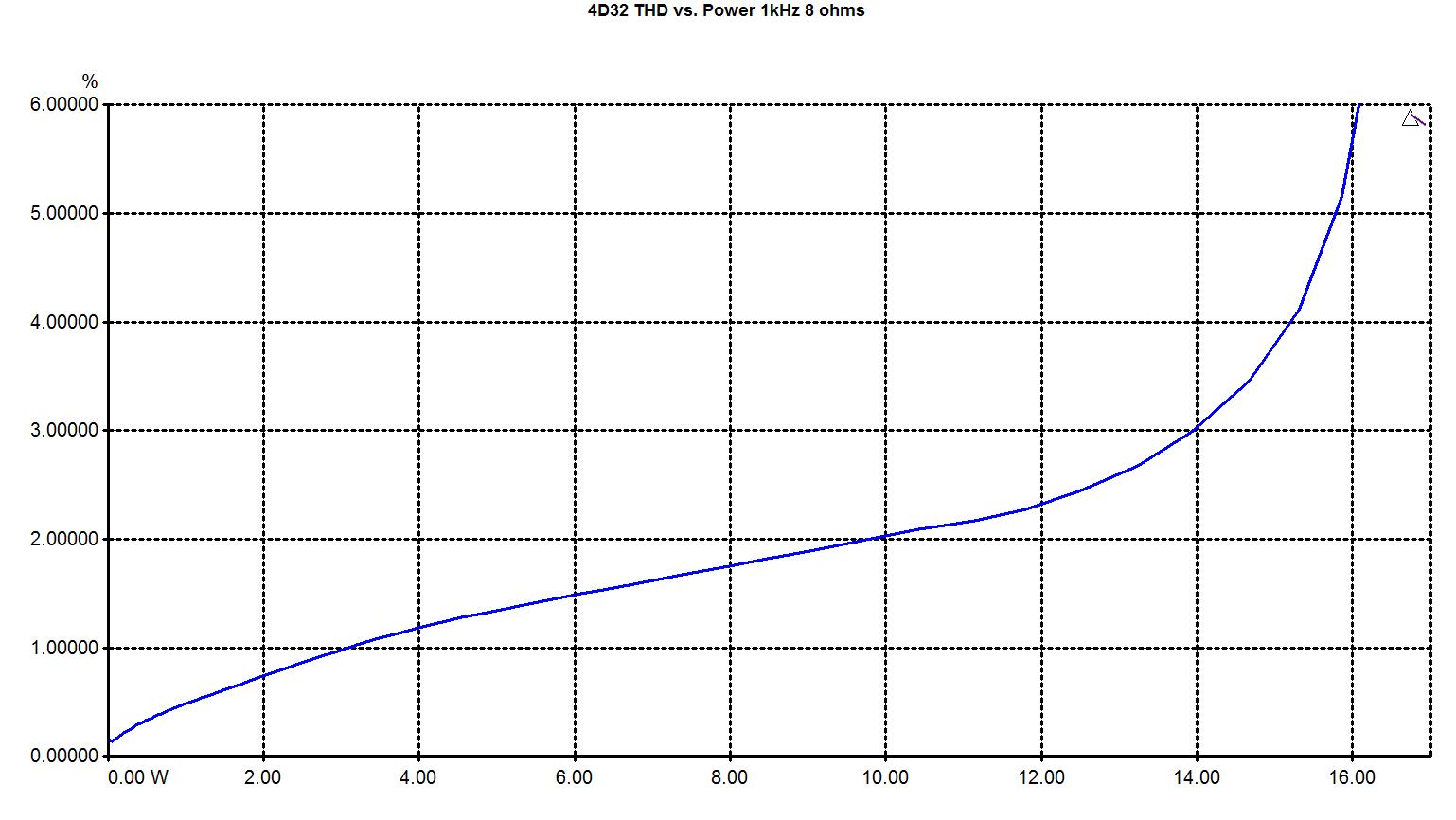
This next plot shows THD vs. Frequency at 10 watts. Distortion is significant at 20Hz.
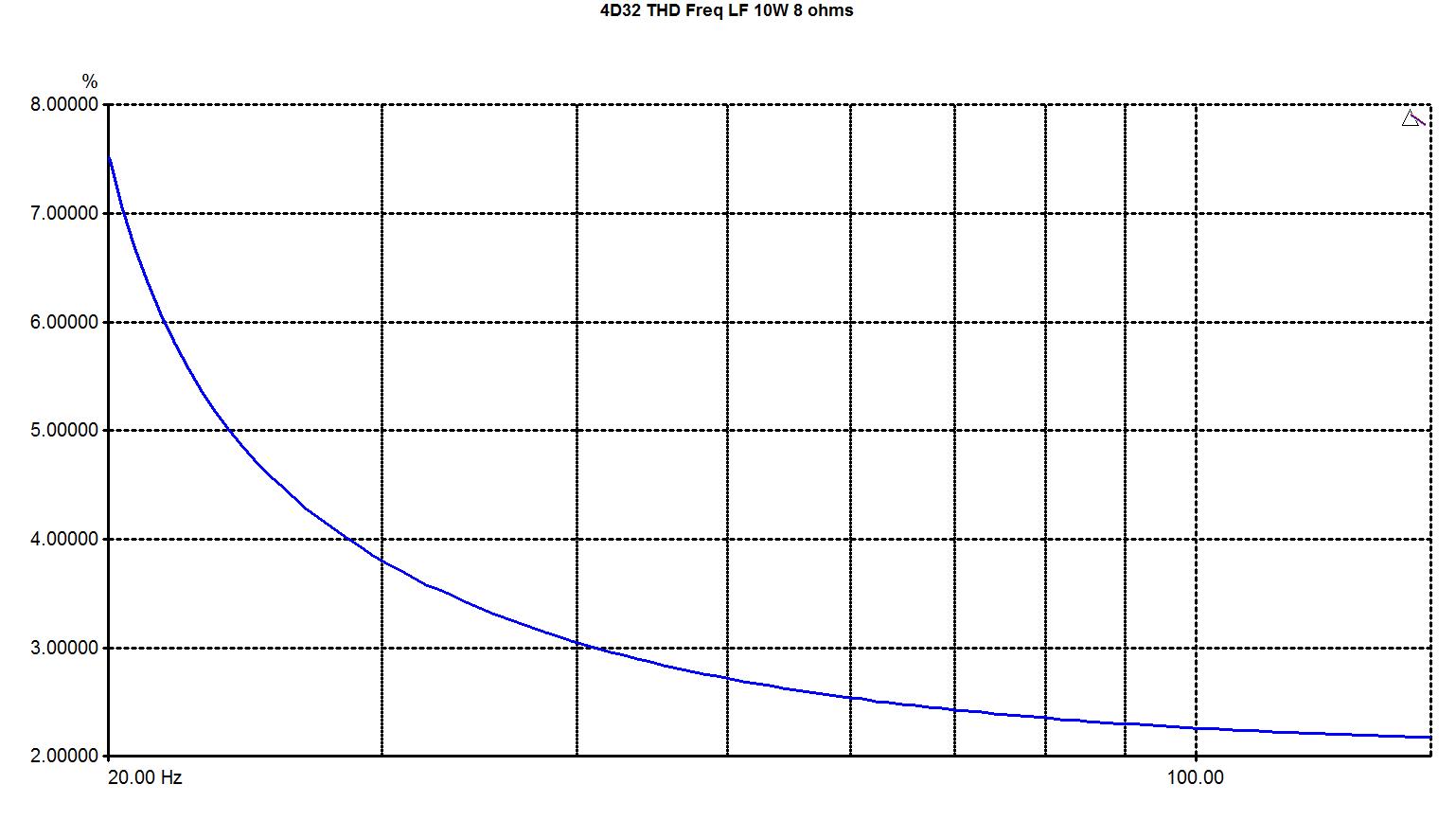
Finally, some FFTs. These show typical single-ended spectra, with 2nd hgarmonic dominant. This one is at 1 watt:
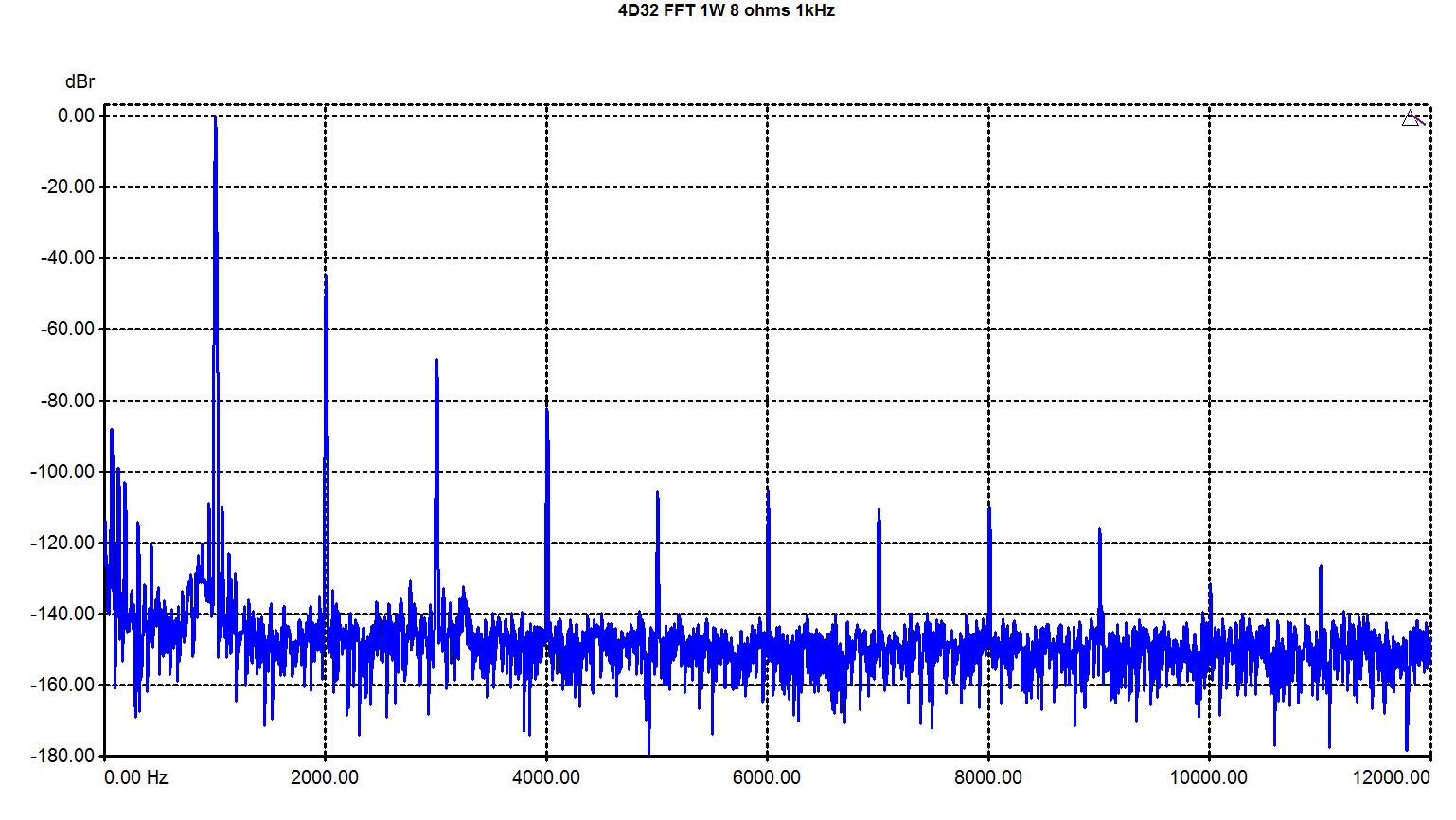
...and at 10 watts, where you see some higher order products:
